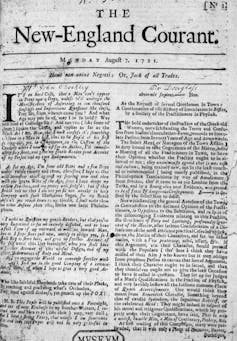
Interim CFOs can cut through politics to help navigate companies through murky waters, experts say.
As they face financial difficulties, leadership crises or other inter-company developments, many firms have ceded their financial reins to interim executives over recent months.
Retailer Bed, Bath & Beyond quickly named their chief accounting officer as interim CFO following the death of their previous financial head earlier in September, for example, while real estate investment trust (REIT) Tanger’s chief accounting officer also recently served a stint as their interim financial head after the REIT ousted their previous CFO, a 28-year company veteran.
One of the reasons to tap an interim CFO is simply to provide peace of mind for the company and its shareholders while the search to find a more permanent candidate is ongoing, said Shawn Cole, president of boutique executive search firm Cowen Partners in a recent interview.
While some searches are as short as 38 days, the majority of executive searches can take between four to six months, a period where remaining without financial leadership is untenable. Firms seeking interims must still consider several key factors when choosing such an executive, however, Cole said.
Companies seeking external candidates, for example — which can be due to inter-company turmoil or, as is often the case, because the company may lack the bench strength to pull forward an internal candidate, Cole noted — should take care to consider “professional interims” for the position as opposed to an unattached CFO, he advised.
“I would just be very cautious that you are not just hiring an unemployed CFO,” Cole said. “There’s plenty of wonderful professional interim CFOs out there that are excellent at consulting. You don’t necessarily want to get yourself into a position where you are engaging just an unemployed CFO, that needs a job.”
Getting a fresh perspective
Bringing in an external interim can also grant companies benefits they may not see with internal candidates, for that matter, explained Mike Harris, CEO of Patina Solutions. Patina, which focuses primarily on placing interim executvies, was acquired by fellow executive search company Korn Ferry this past April.
It can help other executives, notably the CEO, to get “fresh perspectives and viewpoints,” he said.
“If someone is coming in for six months they can tell it like it is, they can come in and make a quick assessment,” he said. “Candidly, it does take out the politics if you’re in there on a limited basis.”
Similar to Cole, Harris pointed to a growing population of what Harris terms as “career interims,” who are working in that capacity because they enjoy the flexibility of movement — they get to go in and get critical projects done for the company, he said.
Turning to an external interim can also help companies execute on particular goals such as a restructuring, said Harris, nothing that what companies need from someone taking on the position for six months could be “very different” than what firms may be looking for out of a permanent CFO. Their short tenure means interims can be “very objective” and have a “big impact” at a company in a short period of time, he said.
“The reason [interims are] usually coming in there is because they have something in their background that’s going to be very helpful for the situation that company is facing,” he said.
Companies may also take advantage of an interim CFOs’ skills as a sort of mentorship for their existing CFO — the executive in the permanent seat may lack M&A or other key experience, for example, that an interim may be able to provide during their short-term tenure.
Tapping insider knowledge
Pulling forward internal candidates to fill the CFO gap can also have benefits for firms if possible, as such candidates have intimate knowledge of the companies’ status and needs that outside executives may lack.
This may be the case for struggling payment processor PayPal, another example of a firm who recently appointed an interim CFO — moving Gabrielle Rabinovitch, their SVP of capital markets into the seat for a second time after the newly-minted CFO departed for medical leave.
In PayPal’s case, the company needs “stability” in its financial chair, which has been lacking since the departure of its previous CFO John Rainey to retailer Walmart, said Josh Crist, managing director for Crist|Kolder Associates.
“It may be time to think about a young internal player as an interim,” Crist wrote in an email regarding PayPal’s CFO woes. “Institutional knowledge should be key given strategic issues the company faces.”
Such a candidate may prove to be a permanent fit at the company, for that matter, he said.
“I believe the current interim might actually be correct for the full time gig! I believe they need an internal player who has seen the nuts and bolts/knows the operating and strategic plan and can help execute,” Crist wrote in an email. “I don’t believe they need a high-level strategist.”
The future of the CFO seat
While companies must carefully consider what it is they are seeking out of an interim — or even a permanent — CFO candidate, qualified executives also have their pick of potential options as the market for executive talent grows more competitive.
CFOs who would have potentially retired or left their current roles years earlier, but were stymied by the pandemic, have now begun to do so, contributing to a narrowing of the potential talent pool. For that matter, the list of responsibilities handed to modern CFOs has grown over recent years, but companies may not have fully adjusted their leadership structure accordingly, Cole said.
“The CFO is no longer the chief accounting officer,” Cole said. “They really effectively should be the right hand to the CEO. While many companies have increased demands of the CFO, they haven’t necessarily brought the CFO into that light. And so I think companies that can show a CFO candidate that they will have a position of significance of their organization, be that strategic business partner to the CEO, I think that goes a long way.”







